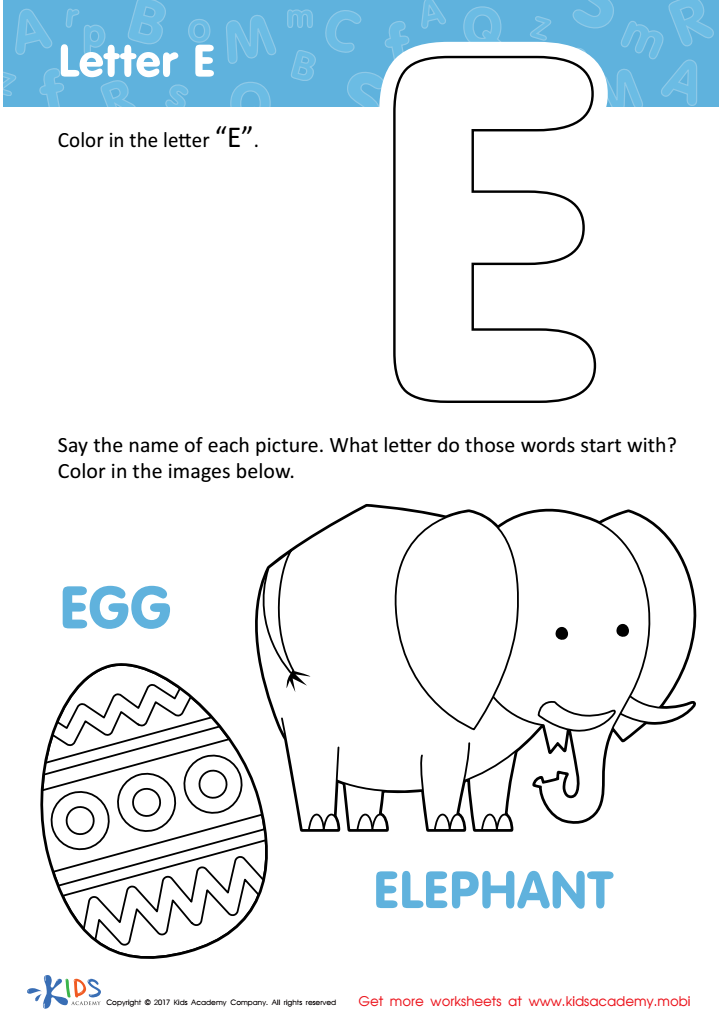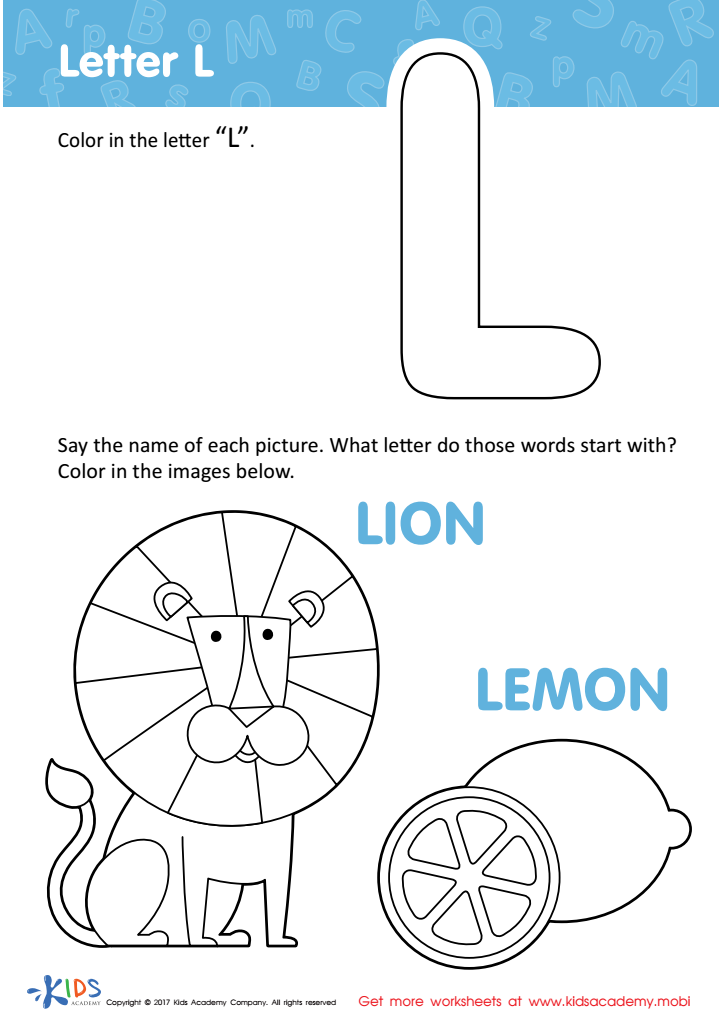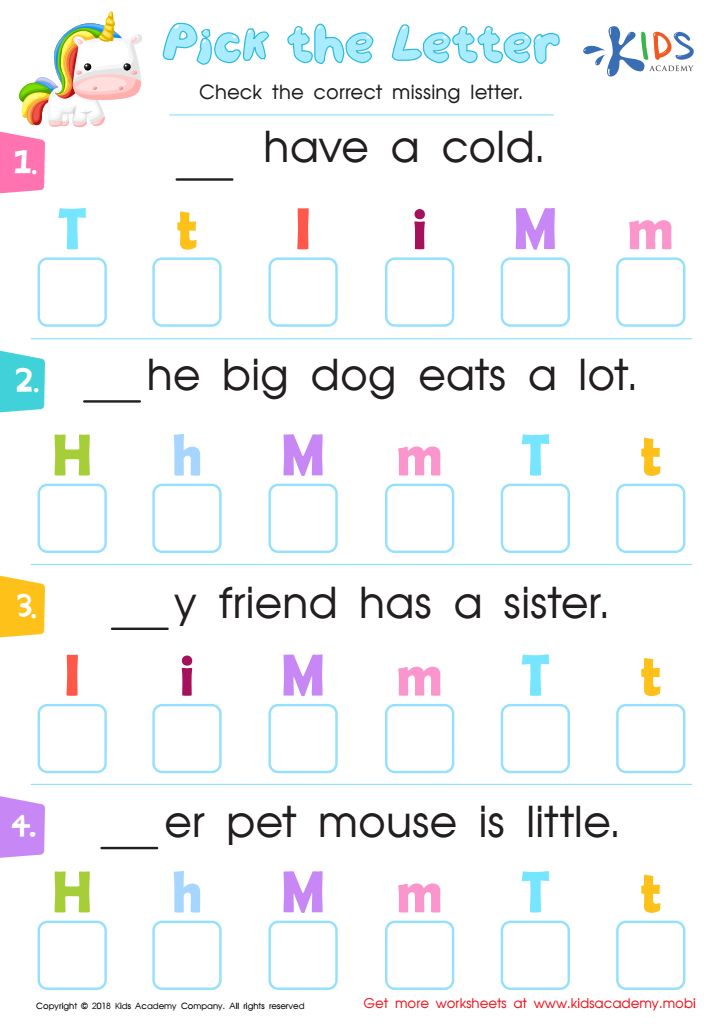Letter-sound association Normal Letter Recognition Worksheets for Ages 7-8
3 filtered results
-
From - To
Enhance your child's reading skills with our Letter-Sound Association Worksheets designed specifically for ages 7-8. These engaging activities focus on normal letter recognition, helping young learners connect sounds with corresponding letters. Our worksheets provide a fun and interactive way for children to practice identifying letters, promoting Phonics and early literacy development. By incorporating a variety of exercises, including matching, sorting, and tracing, these resources encourage retention and understanding of letter-sound relationships. Perfect for classroom use or at-home practice, our worksheets ensure that kids build a solid foundation in reading while enjoying the learning process. Download now and watch your child excel!


Letter E Coloring Sheet


Letter L Coloring Sheet


Pick the Letter Worksheet
Letter-sound association and letter recognition are crucial elements of literacy development for children aged 7-8. At this developmental stage, students are transitioning from basic reading skills to more complex text interpretation and comprehension. Strong letter-sound associations assist children in decoding words, enabling them to read fluently and confidently.
Parents and teachers should care about these skills as they directly affect children's overall academic success. Proficient letter recognition allows students to easily identify words on a page, while strong letter-sound knowledge equips them to sound out unfamiliar words, fostering independence in reading. Consequently, these skills support a child's enthusiasm for literature, which in turn cultivates a lifelong love for reading and learning.
Furthermore, children who struggle with letter-sound associations may experience frustration, low self-esteem, and disengagement in the classroom. By focusing on these fundamental skills, parents and teachers can implement targeted interventions and encouragement that not only boost literacy but also overall motivation to learn. In essence, promoting letter-sound association and recognition during these formative years lays the groundwork for effective communication, critical thinking, and versatility in learning, which are vital for future educational endeavors.
 Assign to My Students
Assign to My Students















